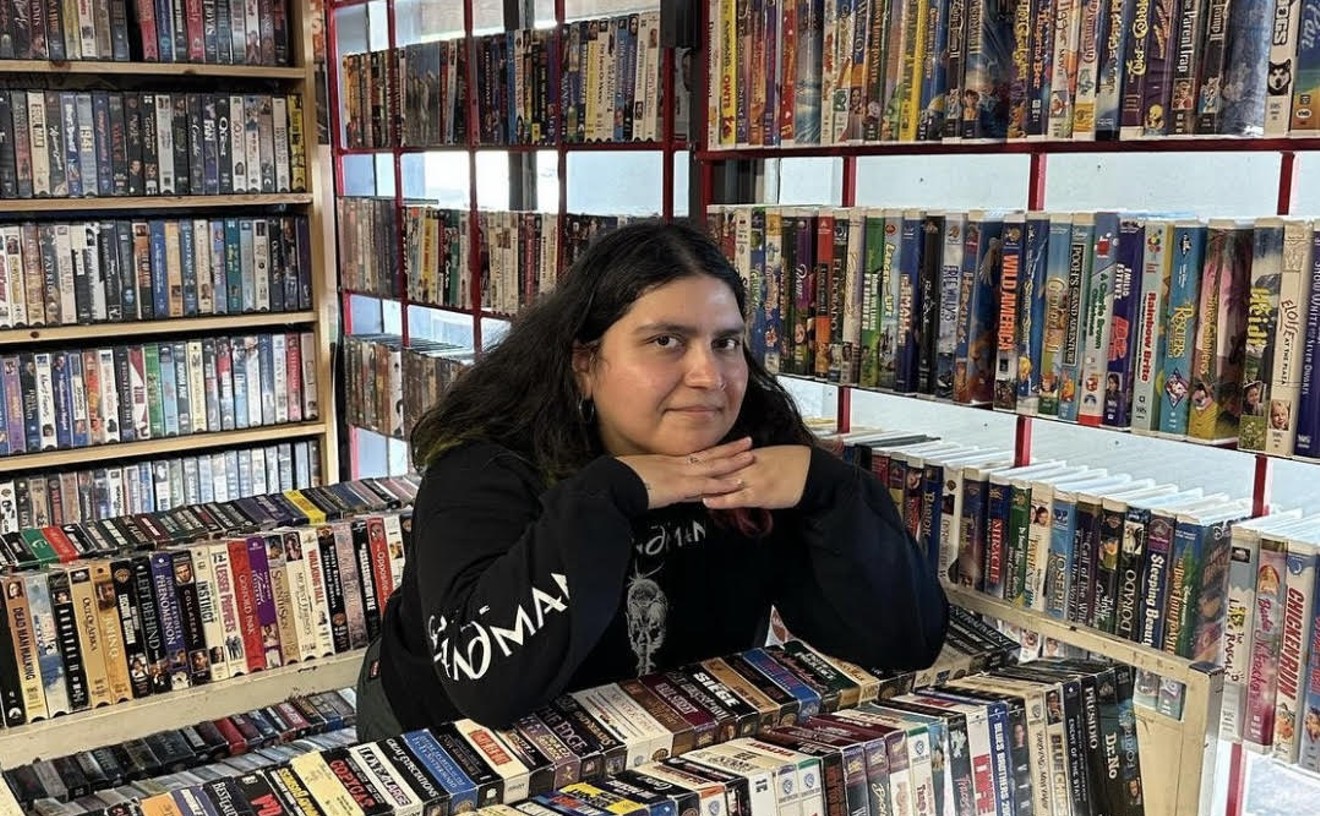I don't know whether the movie biz still works that way, but the art world does. Indeed, group shows of contemporary art often seem like sequels to All in the Timing, David Ives' off-Broadway play featuring a vignette in which monkeys named Kafka, Swift and Milton scratch, eat bananas and then, when the guardians turn their backs, attempt to churn out Shakespeare. The resulting exhibitions are the venues at which the keepers proudly display the latest gibberish ripped from the Olivetti. And those are the good shows. The really bad ones more resemble warehouses for the severely autistic, collections of tortured souls doing their own odd thing in desperate, idiosyncratic and mostly doomed attempts at self-expression, the goal of which may or may not be communication with fellow earthlings.
The good news is that Wall Power, the show of contemporary painting now hanging at the Dallas Center for Contemporary Art, features work that, for the most part, transcends the usual monkey business. The selections--11 works that range from narrative, figurative painting to abstract wall sculpture--are intelligent and intelligible, fresh and honest, if not always profound.
In promotional materials, DCCA curator Joan Davidow focuses on size and impact as the show's themes. But there are several other motifs running through this exhibition, and in the end, these common themes are what save the show from being run-of-the-mill. By and large, the young Texas artists represented here are not afflicted by generational angst, not tortured by history and, best of all, not looking to emulate great artists. Instead, they seem to be obsessed with the tactile and expressive language of their media, with the physical properties of materials.
Some are preoccupied with color, others with shapes or with perspective or pattern. Karen O'Connor, a young Austin artist whose oversized narrative painting of a woman by a pool steals the show, is preoccupied with the process of painting. In "The Four Seasons," O'Connor makes little effort to conceal the Marks-A-Lot sketch that underlies her vividly colored oil painting, letting the canvas show through in spots, covering it thickly in others. O'Connor bares the soul of her subject through the trick of baring technique. By refusing to deceive or to mask the process, she creates a psychological narrative with the stench of truth, a neat trick. The result is not only painterly but Hockneyesque in the very best sense, strikingly modern, moody and isolated. O'Connor's work also recalls Fischl, but without the crutch of gimmicky, sensational subject matter.
Across the way, Dave Ford's "drawings" are unabashedly gimmicky, yet oddly compelling. His contribution, titled "Truck Drawing: El Paso to Dallas, 4/4/02-4/5/02," is a series of 12 graphite-on-paper pieces made by suspending pencils in bottles over sheets of paper and driving, allowing the bumps and turns and motion of the road to record random marks. Wall text suggests that in so doing Ford has "reinterpreted Jackson Pollock's action painting," but the results are more akin to aesthetic experiments such as Walter de Maria's "Lightning Field" in that they record mostly natural phenomena, not aesthetic decision-making. The resulting marks are made in all directions, in all patterns, as haphazardly as the strokes in Monet's lily pads, but with the critical difference that this effect is not the result of the human mind, and so there is no artfulness in Ford's art. Thus Ford's creations remind one of not-terribly-insightful social or artistic commentary, mildly interesting but ultimately empty.
Although Houston painter Sigrid Sandstrom explores perspective in her mysterious moonscape, alas, strictly formal concerns retain their attractions for many of these young artists, and most eschew representation. Houston artist Mark Flood is interested primarily in pattern, color and paint; his acrylic-on-canvas "Cigarette Burn" is a mostly decorative work, consisting of purple-and-orange-hued lace affixed to red canvas, the hypnotic and monotonous pattern interrupted only by burned and missing spaces. Dallas artist Ann Glazer creates a similar but more interesting effect without paint and canvas, employing layers of black paper cutouts that recall Louise Bourgeois, unfortunately without the biting commentary. Las Vegas-based Sean Slattery goes even farther in this direction, using shaped foam cutouts and pours of paint to create a very formal hybrid of painting and wall sculpture, work that is interesting to look at but one-note. Ditto for Bernard Brunon, who paints walls, or fragments thereof, in single colors, creating impressions of coolness and warmth that will strike any habitué of Home Depot as nothing terribly new or profound.
One of the most interesting pieces in the exhibition is Ana de Portela's wall painting in black tar. The work, titled "A Swinger of Birches," consists of two arched forms suggesting tree branches bent to the ground, and in de Portela's hand the tar has properties as interesting and expressive as anything borne of an artist's pigments and palette knife. The work is accompanied by a Robert Frost poem, "Birches," which presents the image of a lonely boy subduing trees, an obvious metaphor for the struggles of the artistic process. As the closing line and de Portela's work suggest, one could do far worse than to swing from this interesting tree. It sure beats aping Shakespeare.










